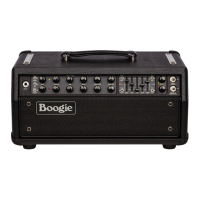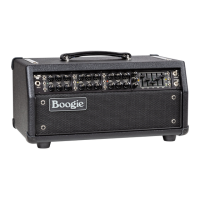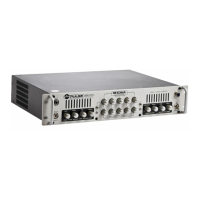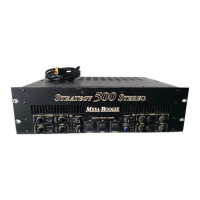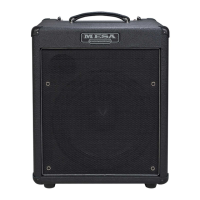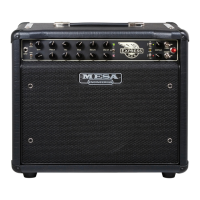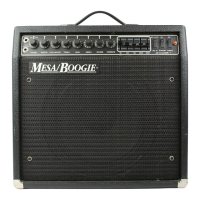hearing as their reference. It would not do well to set the MARK V permanently to this faster, tighter way. Too many players would
have a tough time adjusting and when they compared the two amps side by side, the V would sound faster and tighter yes, but also
stripped of sub-low and therefore maybe not as fat in comparison to their trusty II C+ Graphic model or MARK IV - which also had the
bigger coupling cap. What to do at the crossroads? What we do is take more time… and go down both roads.
So in the MARK V we gave you both fast and fat.
The II C+ Mode in Channel 3 uses this smaller coupling cap to deliver the tightest attack and fastest response in the time domain. In
addition you get the bonus of having this Mode work incredibly well with the EQ, because the lack of sub-low at the end of the preamp
means you can add more low frequencies with the EQ before the sound gets flubby. So all you II-C and MARK IV guys might like this
characteristic even better. You can get high gain sounds with the EQ even tighter than ever before!
The MK IV and EXTREME Modes utilize the bigger coupling cap to add sub-low and slow down the attack for a bigger, fuller slow-
hand feel that is absolutely huge. You will find that you have to be a little more careful with the 80 and 240Hz Sliders when dialing in
low end with the EQ because more low end happens earlier, but the sound is definitely bigger.
So if you want it tight, urgent feeling with the fastest attack and maximum focus, use the MK IIC+ Mode. If you want the fattest, warm-
est, biggest sound and don’t need the super fast response, use the MK IV and EXTREME Modes.
Oh, and by the way…Mission Accomplished! The Oracle, His Highness The C-ness, now shares the Throne Of II-C Tone with the
MARK V. Of course the MARK V rules in so many other sonic Kingdoms that it has it all over the II-C for all around diversity of
sounds and incredible gig-ability.
NOTE: II-C+ and MARK IV OWNERS
If you do end up doing a side by side with a II-C+ for the LEAD Mode, you must use the II-C+ and MARK V set like this for a fair
comparison:
SET II-C+ As Follows:
VOLUME (Far Left) control Pulled (Bright On) and set to Approx. 7 ¾. (This stage in the MARK V is set to a sweet spot we found
from measuring many amps and control deleted).
LEAD DRIVE Control Pulled and set to desired setting
All Tone Controls set by ear as close as possible (we measure each pot and set both exactly with an ohm meter).
PRESENCE set to desired setting. (0 or 10 is the most fair for comparisons sake and removes any pot variance).
GRAPHIC EQ Off (Bypassed)
SET MARK V As Follows:
GAIN control set by ear and relative “clock face” setting to II-C LEAD DRIVE.
Tone Controls set by ear and relative “clock face” setting as II-C Tone Controls. (Remember that II-C BASS control is in the 2nd posi-
tion - MID is 3rd on II-C whereas MARK V is TREBLE, MID, BASS).
Channel 3 BRIGHT switch in the BRIGHT (switch down) position.
Rear Panel Channel 3 TRIODE / PENTODE switch set to TRIODE (switch down).
Rear Panel EFX LOOP switch set to ACTIVE (switch up).
tHe CHannelS: (Continued)
PAGE 15

